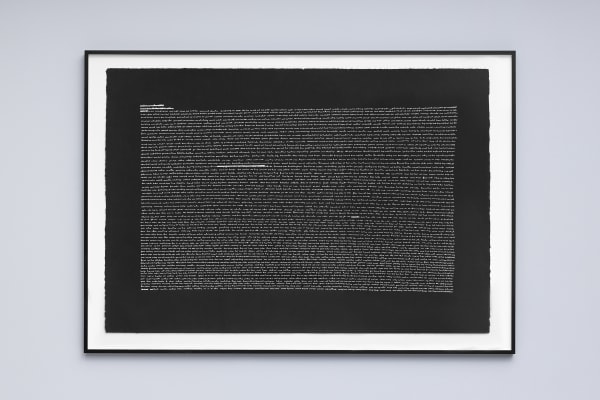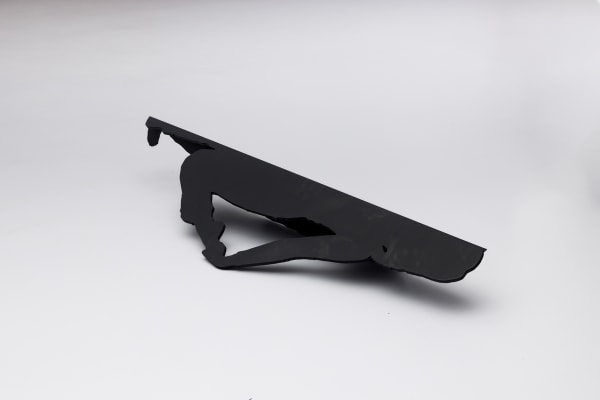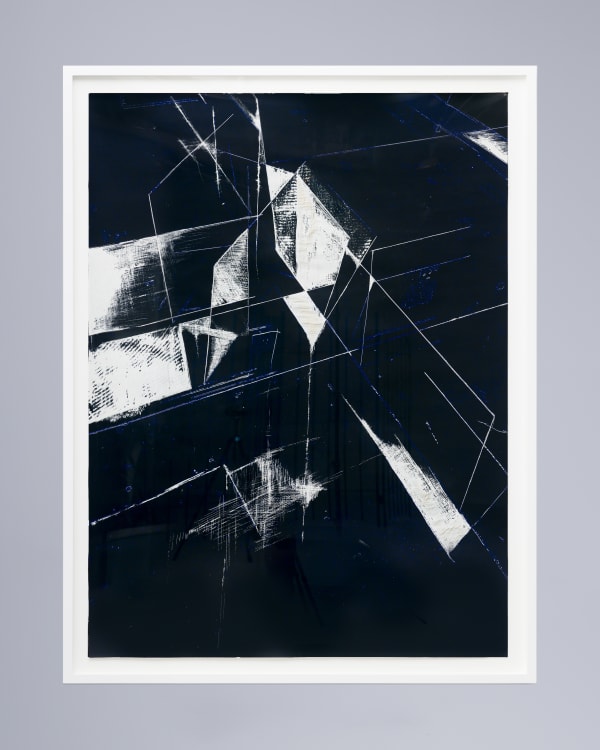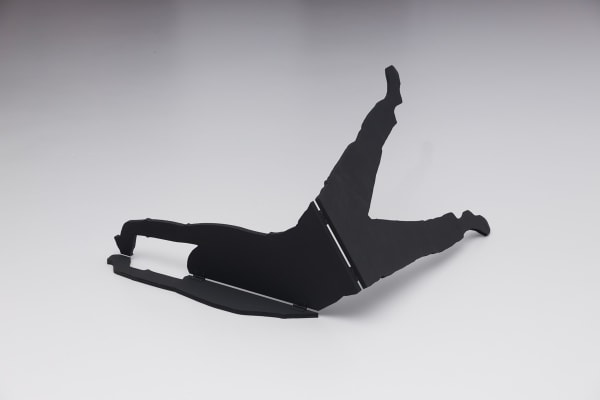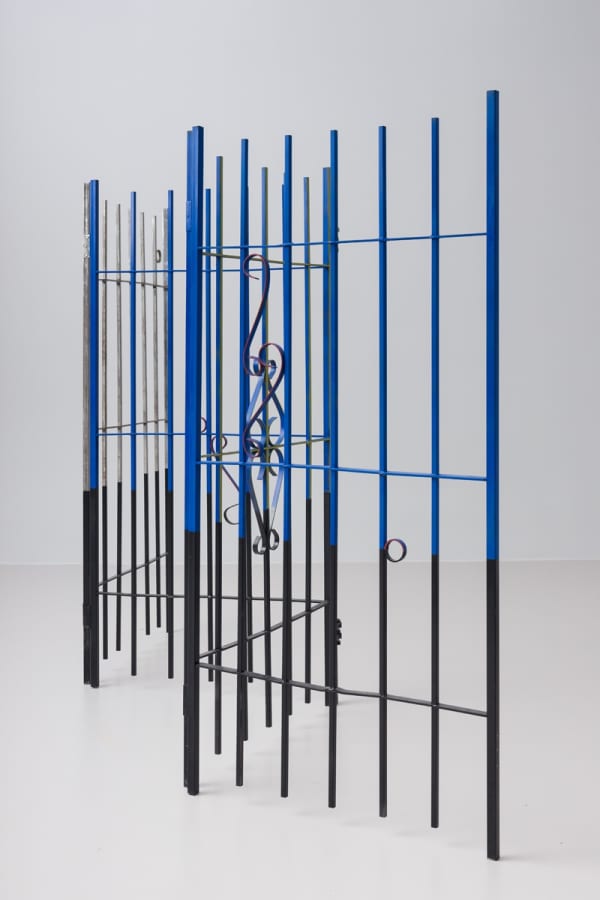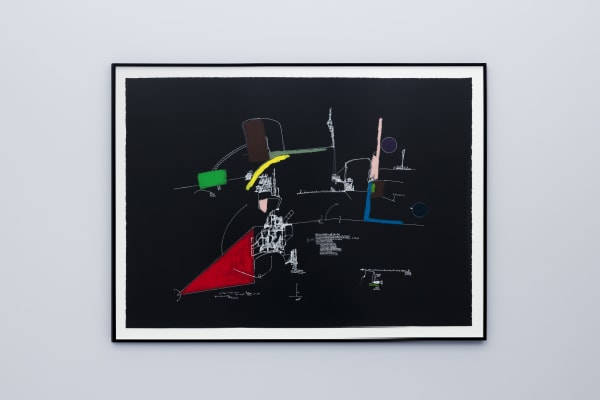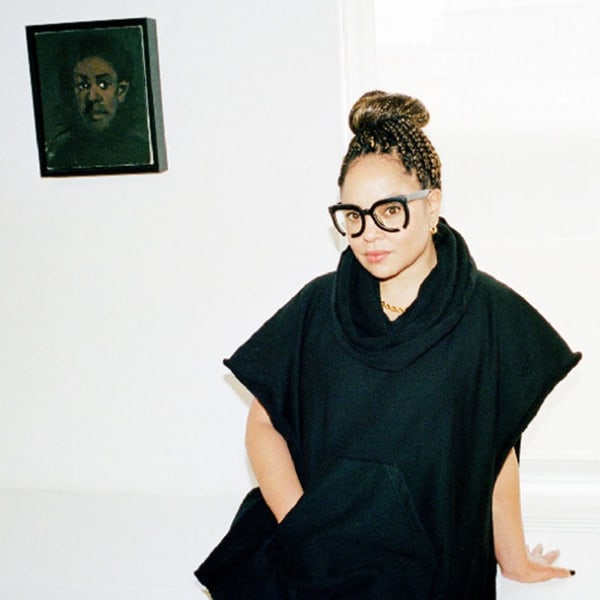We Buy Gold: SEVEN.
“So much of the work...
I think about in terms of this kind of 'slippage'.” - Joeonna Bellorado-Samuels
-

Renee Gladman
Their Sleep, 2022
-

David Hammons
Untitled (dung), 1983-85
-
 David Hammons
David Hammons
Untitled (dung), 1983-85 -
 David Hammons
David Hammons
Untitled (dung), 1983-85 -
 David Hammons
David Hammons
Untitled (dung), 1983-85 -
 Max Guy
Max Guy
Untitled (Quarantine Yoga, Series #1), 2022 -
 Charisse Pearlina Weston
Charisse Pearlina Weston
(i can) feel it when you lie to me, 2022 -
 Max Guy
Max Guy
Untitled (Quarantine Yoga, Series #3), 2022 -

Charisse Pearlina Weston
Untitled, 2017
-
 Ashley Teamer
Ashley Teamer
4912 St. Bernard Ave, 2021 -

Ashley Teamer
Gentilly, 2022
-
 Abigail Lucien
Abigail Lucien
Half Full and Knee Deep, 2018 -
 Charisse Pearlina Weston
Charisse Pearlina Weston
this world’s in a tangle (got news this mornin’), 2022 -
 Max Guy
Max Guy
Untitled (Quarantine Yoga, Series #2), 2022 -
 David Hammons
David Hammons
Untitled (Double body print collage), 1976 -

Lynette Yiadom-Boakye
Gryphon, 2023
-

Lynette Yiadom-Boakye
Extracts from “The Life and Times and Longings Of The Gryphon”, 2023
-

Lynette Yiadom-Boakye
Extracts from “The Life and Times and Longings Of The Gryphon”, 2023
-

Renee Gladman
Tremor Vector Still, 2022
-
 Max Guy
Max Guy
Untitled (Quarantine Yoga, Series #4), 2022 -

Renee Gladman
Space Question Vector, 2021
-
 Renee Gladman
Renee Gladman
Untitled (p descending pp), 2023
We Buy Gold is pleased to present SEVEN., a group exhibition that will take over Jack Shainman Gallery and Nicola Vassell Gallery in Chelsea, New York. Curated by Joeonna Bellorado-Samuels, SEVEN. features work by Max Guy, Renee Gladman, David Hammons, Nandi Loaf, Abigail Lucien, Kerry James Marshall, Lorraine O’Grady, Ashley Teamer, Charisse Pearlina Weston, and Lynette Yiadom-Boakye. Founded in 2017, We Buy Gold is a roving art space presenting exhibitions, commissioned projects, and public events. Launching with a suite of four exhibitions in Bedford-Stuyvesant, Brooklyn (ONE., TWO., THREE. and The Yard), and going on to produce ambitious collaborations with contemporary artists and curators such as Moses Sumney (SUNSET.), Nina Chanel Abney (FIVE.), and Diana Nawi (SIX.), We Buy Gold mounts projects that encourage the dissection and deconstruction of systems of power by artists working in a cross-section of creative media.
SEVEN. explores the ways in which artists disrupt the politics of space, time, and language to constitute another world. In their fertile hands, the measure of time lengthens, bodies morph, and the fixed use-value of objects and language slips—highlighting the foundational fractures present within contemporary society. Whether in Max Guy’s time-warped diptych of The Wizand The Wizard of Oz, Ashley Teamer’s splintered interstates of embroidered inkjet prints, or Kerry James Marshall’s clattering and colossal pocket change, emerging and established voices harmonize through practices that strive to upend figurative expectations and reveal the obscure structures that dictate significance. Distorting the boundaries of the body, architecture, place, and meaning, each artist investigates the generative capacity and possibilities of the undefined and malleable. How are new worlds constituted in the midst of contemporary crises? By leaning into ruptures that open out into an otherwise.
Renee Gladman is a writer and artist preoccupied with crossings, thresholds, and geographies as they play out at the intersections of poetry, prose, drawing, and architecture. Working primarily on paper, Gladman treats the drawing space as an evolving laboratory for exploring blackness, the nonvisible, structures of habitation, and fictional knowing.
Max Guy is an interdisciplinary artist who works with paper, video, sculpture, artist books, and installation. He activates fast, ergonomic methods to make poetry of the world, creating work that approaches existential themes with material and conceptual levity. Describing his process as an act of tracing life’s contours, Guy’s experimental practice contemplates the world that surrounds him and how individuals augment themselves to be a part of it.
David Hammons is a conceptual artist whose work is rooted in found objects and assemblage—wielding a complex vocabulary of familiar symbols that reveal the charged politics of everyday objects. With a manifold practice spanning drawing, painting, printing, performance, sculpture, and video, Hammons’ art confronts conflicts of African American identity, community, and urban life. Making work that defies commodification, Hammons’ remains committed to investigating and establishing what it means to create as an outsider of the art world’s institutional establishment.
Nandi Loaf investigates the existential state of the artist by implicating herself—constructing the identity ‘Nandi Loaf: the artist.’ This fetishization of the artist creates a hermetically sealed practice: a hedonistic exploration that Loaf refers to as ‘hyperparticipation.’ Often blurring the lines between her simulated and physical presence, Loaf’s works move seamlessly between paintings, prints, acrylic sculptures, and home-built machines to create maximally reduced interventions. In doing so, Loaf makes her subject the social and financial sites of exchange in the art world.
Abigail Lucien is a Haitian-American interdisciplinary artist. Lucien’s practice addresses themes of (be)longing, futurity, myth, and place by considering our relationship to inherited colonial structures and systems of belief/care. Working across sculpture, literature, and time-based media, Lucien’s practice is auto-ethnographic: referencing found objects and familiar surroundings as a way to implicate the body’s relationship to material and place—interpreting concepts such as loss, love, and grief as a fluid procession rather than a state to reach or become.
Kerry James Marshall is an artist whose work interrogates Western art history, challenging and recontextualizing the canon to include themes and depictions that have been historically omitted. His mastery as an artist has radically changed what he calls “the lack in the image bank” by foregrounding Black subjects in his paintings. Born in Birmingham at the beginning of the American Civil Rights movement, and later moving to the Watts neighborhood of Los Angeles just before the 1965 Watts riots, Marshall’s work is inspired by his own personal history as well as what he interprets to be recurring elements of the American experience.
Lorraine O’Grady is a conceptual artist and cultural critic whose work employs the diptych as its primary form. While she has consistently addressed issues of diaspora, hybridity, and black female subjectivity, O’Grady uses the diptych’s “both/and thinking” to frame her themes as symptoms of a larger problematic: that of the divisive and hierarchical either/or categories underpinning Western philosophy. In her work, personal and aesthetic attitudes often considered contradictory, such as anger and joy or classicism and surrealism, are not distinguished and technical means are governed both by chance and obsessive control—simultaneously expressing political argument and unapologetic beauty.
Ashley Teamer’s collages explore the relationships between the body, nature, space, and time. She uses painting, sculpture, photography, and sound to creatively intervene with indoor and outdoor architecture revealing the malleability of our built environment. Through layering images, Teamer charts invented landscapes where dialogues between divergent moments and relationships are bridged.
Charisse Pearlina Weston is a conceptual artist and writer whose work emerges from deep material investigations into symbolic and literal curls, layerings, and collapses of space, poetics, and the autobiographical. Her work contends with the dynamic interplay of violence and intimacy through repetition, enfoldment, and concealment.
Lynette Yiadom-Boakye is a painter who creates fictional figures that are untethered to a specific time or place, and are born from various untraceable subjects: people, objects, thoughts, photographs, or images she has drawn, observed, or recalled. When describing her painting and writing, Yiadom-Boakye derives each practice from the language of poetry—a fiction imbued with reality and truth. Merging the visual and textual, her titles function as another mark beside the painting that, like her figures, need not describe, explain, or justify.

